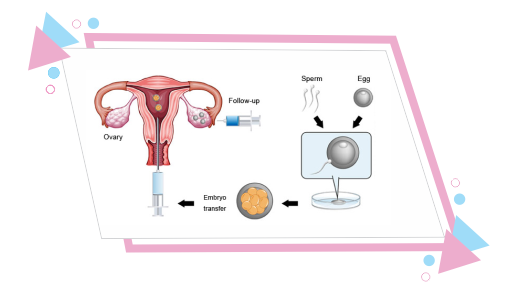In Vitro Fertilization (IVF) and Embryo Transfer (ET)
Services / In Vitro Fertilization (IVF) and Embryo Transfer (ET)

IVF is a major treatment for infertility when other methods of assisted reproductive technology have failed. It is a process used to conceive a child outside the body.The women’s egg are collected and a man’s sperm are placed together in a plastic dish for fertilization. After fertilization the resulting embryos are then transferred to the women’s uterus with the intent to establish a successful pregnancy.
The IVF Procedure
IVF is a series of steps which might take several weeks. The steps involved in this procedure are given below.
It is a process by which an egg is fertilised by sperm outside the body in vitro. IVF is a major treatment for infertility, when other methods of assisted reproductive technology have failed. The process involves monitoring a woman’s ovulatory process, removing ovum or ova(egg or eggs) from the woman’s ovaries and letting sperm fertilize them in a fluid medium in a laboratory. When a woman’s natural cycle is monitored to collect a naturally selected ovum (egg) for fertilization, it is known as NATURAL CYCLE IVF.
IVF is not a simple procedure, but a series of steps over several weeks. The steps involved in this procedure are outlined below.
Stimulating of the Ovaries
Hormones are mostly given to stimulate the ovaries in order to produce more than the usual one egg per cycle. This is to enable the collection of several eggs. With the help of blood tests and ultrasounds, the developments of the eggs are monitored and to ensure the collection of eggs at precisely the right time.
Collection of the Eggs
The ultrasound with a fine needle threaded through a guide is inserted in the vagina, which is attached to a probe, under a light anesthesia. The ultrasound monitor will show the follicles and as the needle will pierce the follicle and extracts the follicular fluid containing the egg.
Fertilisation and Embryo Transfer
In the IVF Lab, As the egg is fertilized by a sperm, a zygote or pre-embryo will begin to develop. The pre-embryo remains in the incubator for one or two days, until it has divided into two or four cells. Following Fertilization, two to three embryos will be transferred to the uterus using a soft, fine catheter. This procedure (known as embryo transfer) is quite painless, similar to a smear test, and requires no anesthetic.
Pregnancy Test Results:
Two weeks after the transfer, a blood test is taken to determine if the woman is pregnant.